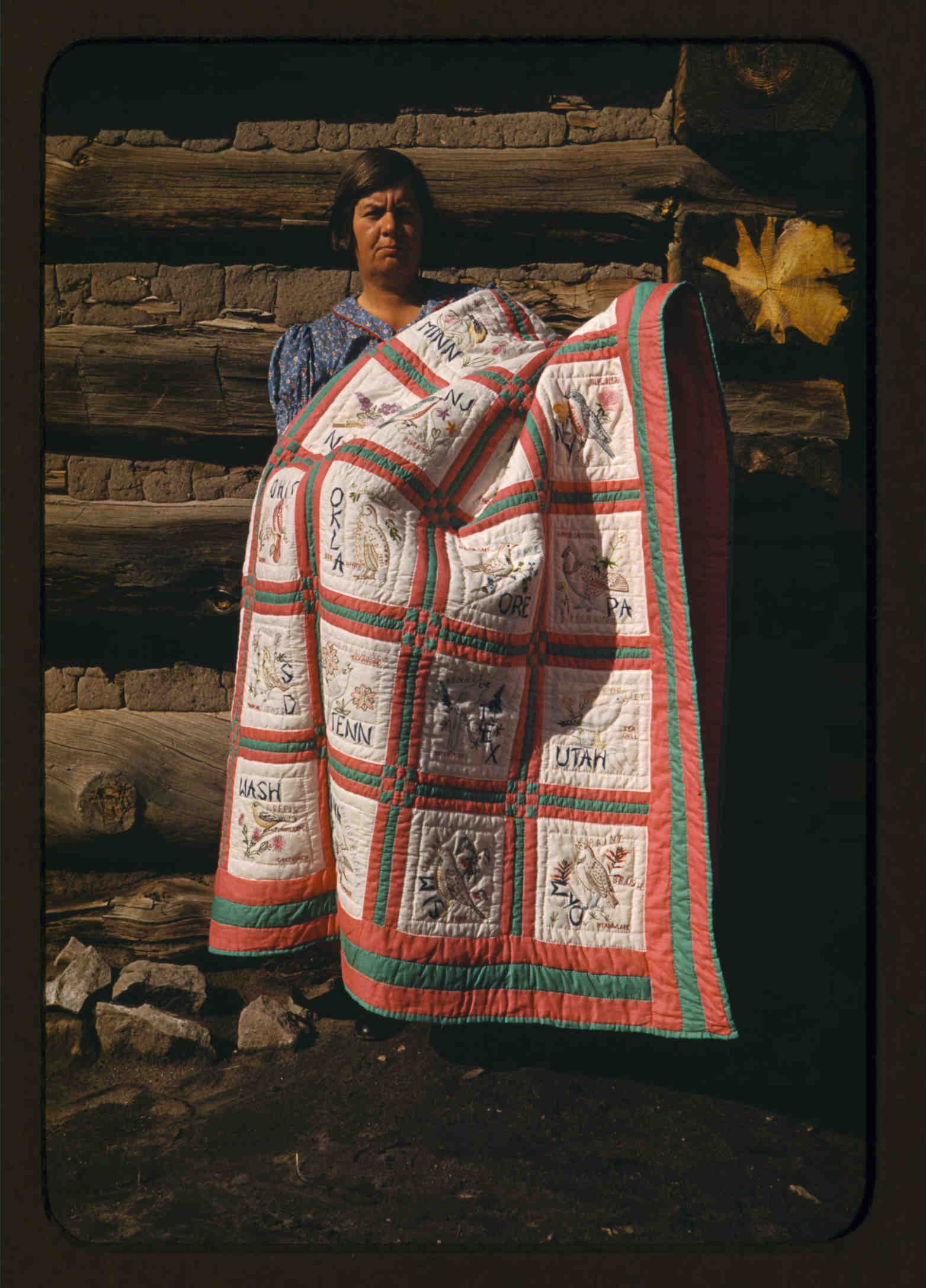 There are many ways to tell your family story. You can write a genealogy, create a DVD, or design a family website. But there are other options, too. You could make a quilt. These testaments to a women’s skill with a needle are centuries old. Traditionally, bed coverings are collections of colorful cloth stitched together into a pattern. Each one is a valuable family treasure and artifact, yet some are more family history oriented than others.
There are many ways to tell your family story. You can write a genealogy, create a DVD, or design a family website. But there are other options, too. You could make a quilt. These testaments to a women’s skill with a needle are centuries old. Traditionally, bed coverings are collections of colorful cloth stitched together into a pattern. Each one is a valuable family treasure and artifact, yet some are more family history oriented than others.
Signature Quilts
Signature quilts feature names. They became popular in the mid-1800s when friends and relatives would make them as going away gifts for families moving away. Each block of fabric features a signature in stitching. Today, there are variations that include transferring historical signatures from documents or showing off your penmanship using permanent markers. If you want to learn more about creating one, follow the tips and instructions on Equilters.com.
Photo Quilts
Instead of handwriting, how about turning your quilt into a fabric photo album? Each block contains an image. All you need is a scan of a picture or document, some photo transfer paper, fabric for a quilt, and an iron. Photo transfer paper is readily available in fabric stores and art supply shops.
You design the decorative elements for each block, but photos are the centerpiece. Purchase the right paper for your printer and follow the directions exactly. Remember, you’ll have to reverse the image for it to look correct once ironed onto the cloth.
Once you’ve printed the picture on the special paper, you’ll need to use an iron to heat-transfer the image to the fabric. It only takes a few minutes. I advise buying extra fabric and paper just in case you make a mistake. Soon, you’ll be ready to piece your quilt together an image at a time. Use the search feature on Equilters.com to see examples of photo quilts.
If you don’t want to make one yourself, Things Remembered will create a throw using a single photo that you supply.
“Voice Quiltsâ€
New to the market is a different type of quilt—-it’s a collection of voices. Voice Quilt offers you a chance to record family history stories in a digital file.
You purchase a set number of minutes (the maximum is five hours), invite folks to participate either using the e-mail service offered on the site, by sending paper invitations yourself, or by phoning family with the details about the toll-free number and access code. Then let them do the talking. Each call can be a maximum of fifteen minutes.
Once complete, save the recording to a keepsake box (available from Voice Quilt), e-mail the file to participants, and download it to your computer. It’s a great way to record the history of a photograph or a family story. Create one for a special occasion such as a birthday or anniversary. It’s as easy as dialing the phone and as comfortable as talking to an old friend.
What’s Your Favorite Quilt?
As you’ve seen here, there is certainly more than one way to share family history. Try these three techniques to creatively express your genealogy, and you’ll be able to brag about family without talking. Got a crafts tip you’d like to share? Use the comment section on the 24/7 Family History Circle blog to share.
Click here for a printer friendly version of this article.
Maureen Taylor, is “The Photo Detective.†She writes about family history and photography on her blog.

About the photo quilts. There is also printable canvas available that can be sewn into the quilt, no ironing necessary.
Unfortunately, some of the equilters.com links are not working.
I just got into eQuilters.com (both links), so try again as they may have just been temporarily overwhelmed with traffic.
There is a problem with “Times Remembered” though and I’ve replaced it with “Things Remembered” (http://www.thingsremembered.com). Am not sure where Times Remembered went, but it now forwards to a photography site.
Sorry for the confusion!
Juliana
My niece has a family quilt that my great -grandparents supposedly wrapped everything in when the Union (really outlaws from Kansas)forces burned them out and caused them to leave St. Clair County, Missouri. It is very worn so family members have not decided yet what to do with it.
I was very interested in the “traced signature technique”; however, the link is incorrect. Does anyone know how I can get information on this technique? Thanks.